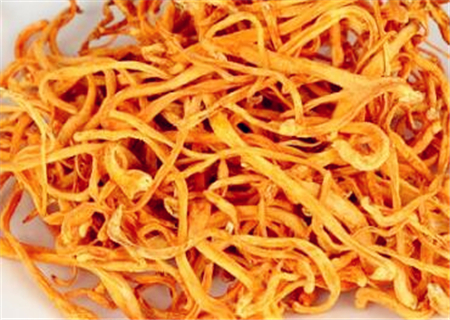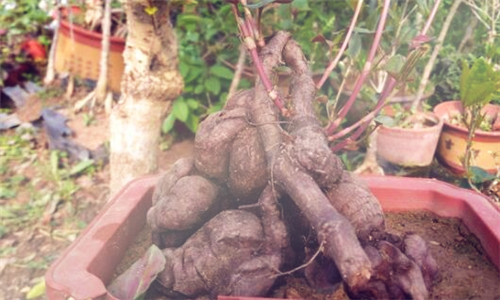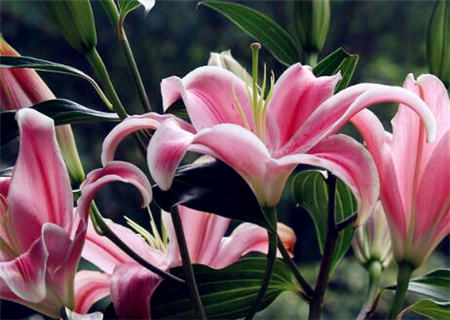How much is the cost of Cordyceps sinensis now? How can I eat it well? Who can't eat? How to cultivate it?
"Cordyceps sinensis flower" is not a flower, but actually a Cordyceps sinensis fruiting body, not a Cordyceps sinensis fruiting body. The medium imitates all kinds of nutrients contained in natural insects, including grains, legumes, eggs and milk, etc., which belongs to a kind of fungi. So how much is the cost of Cordyceps sinensis now? How can I eat it well? Who can't eat? How to cultivate it?

How much is the price of caterpillar fungus per jin?
The price of Cordyceps sinensis flower is different because of its different quality, size and origin. In addition, the price of Cordyceps sinensis flower is also different due to the different volume of goods. For example, the wholesaler takes 1000 kilograms to calculate 50 yuan per jin, the wholesaler gives the retailer 60 yuan per jin, and the retailer gives the final consumer group 120 yuan per jin.
Generally speaking, the retail price of the supermarket is about 50-60 yuan per 500g.
At present, two kinds of media are used to cultivate Cordyceps sinensis flowers in the producing area, namely wheat and rice. Wheat is widely used, almost all Cordyceps sinensis flowers are used, and the price of Cordyceps sinensis flowers is also lower than one jin according to different strains and quality ranging from 30 yuan to 150 yuan. The Cordyceps sinensis flowers cultivated by rice are very good, and the price starts from 200 yuan per jin.
The price of Cordyceps sinensis flowers has declined year by year in recent years, from 180 yuan per jin in 2010 to 60 yuan per jin now. The reason for this phenomenon should be the increase in the number of people planting Cordyceps sinensis flowers, as well as the industrialization, the formation of large-scale technology, and the sharp increase in Cordyceps sinensis flower production, from the previous wholesalers to take the goods, until now no one has asked that many kinds of Cordyceps sinensis flower farmers have lost money and closed their doors after 2014.
How to eat Cordyceps sinensis flower is the most effective?
Other ways to eat Cordyceps sinensis can be stewed or cooked. Before stewing, wash the cordyceps flower and soak it for an hour, and then stew the cordyceps flower and lean meat (or old duck and black chicken) together to make a soup, which tastes good but not greasy, tastes good and has no side effects, and the family can rest assured to eat it. Weak friends can try it.
Who can't eat caterpillar fungus flowers?
(1) Cordyceps sinensis is not as suitable for young and old as advertised. Because it has an androgen-like effect, it may lead to precocious puberty in children, so it is not suitable for children.
(2) the so-called "excess syndrome" of people with all kinds of excess syndrome is mainly due to a series of pathological changes caused by the exuberance of evil qi, the failure of vital qi and the fierce struggle between evil and righteousness. It is commonly seen in the early and middle stages of exogenous diseases; now it is generally believed that high fever, mania, loud voice, abdominal pain refusing to press, obstruction of two stools, strong pulse and so on all belong to the clinical manifestations of "excess of evil qi". After eating Cordyceps sinensis, people with real symptoms not only can not achieve the purpose of treatment and health care, but also lead to adverse reactions such as upset, nausea and bleeding of mouth. (3) patients with yin deficiency and exuberant fire should not be used alone to prevent aggravation of the disease.
(1) people who smoke, drink alcohol and take drugs for a long time.
(2) those who are under great pressure at work and are prone to fatigue.
(3) Urban syndrome: people with low immune function, irritability, fatigue, restlessness or aging too fast, prone to colds and allergies.
(4) the middle-aged and the elderly, people who lack exercise and are weak.
(5) patients with all kinds of tumors.
(6) patients with pneumonia, tuberculosis, emphysema, asthma and chronic bronchitis.
(7) patients with acute and chronic hepatitis and liver cirrhosis.
(8) people with myocarditis, irregular heart rate, stroke, cerebral thrombosis, vascular sclerosis, hyperlipidemia, high and low blood pressure.
(9) people with acute and chronic glomerulonephritis, kidney failure, kidney deficiency, uremia and diabetes. Note: for people who are already sick, please first follow the doctor's advice to take treatment drugs! Cordyceps sinensis only plays an adjuvant role in treatment.
Flower cultivation process of Cordyceps sinensis
Bacteria species
The isolation, purification and culture of bacteria are very important and difficult. It is to use wild bacteria for tissue isolation, then culture and purify the excellent original species, and then expand the culture after artificial purification to cultivate a large number of bacteria.
Cultivate
In the laboratory, the culture medium is usually made of potatoes, glucose, Agar, peptone, inorganic salts, etc. In large-scale cultivation bases, rice, wheat, corn, legumes, eggs and milk are used to make culture media in proportion to the formula, which need to be sterilized after being packed in containers (bottles).
Inoculation
After making the culture medium, the next step is to inoculate the bacteria on the culture medium. This process needs to be operated under aseptic conditions, otherwise, it may contaminate the bacteria and culture medium and bring in miscellaneous bacteria.
Cultivate
After inoculation, it was moved into the culture room and put on the shelf for culture. The optimum temperature for mycelium growth was 15-25 ℃, and the optimum temperature for ascent growth was 18-22 ℃. The culture room needs to maintain a certain degree of temperature, humidity and clean air. After 2-3 months of cultivation, the growing pedestal can be harvested when it slowly turns into an orange-red or orange rod.
Save
After harvest, put it into a clean appliance to dry or dry in time, and the dried pedestal is stored or sold in an airtight plastic bag. After harvest, add water or nutrient solution to the culture medium according to different conditions, maintain a suitable temperature to restore its growth, and harvest 1-2 stubble pedestal.
Time: 2019-03-15 Click:
- Prev

How much is the market price of Polygonum multiflorum? How much money can you make by planting one mu? What are the market prospects? How
Polygonum multiflorum, also known as Polygonum polygonum, wisteria, night vine, etc., is a common traditional Chinese medicine in Yunnan, Guizhou, Sichuan, East China and other places. It is widely used because of its anti-aging, brain-strengthening and intelligence-promoting effects.
- Next

How to keep perfume lilies? When is the best time to plant? How many times a year do you bloom? (attached hydroponics method)
Perfume lily, also known as Casablanca, also known as the sky lily, it is also a kind of lily. The flower words of perfume lilies are great love, so many people love perfume lilies very much. So how to keep perfume lilies? When is the best time to plant? How many times a year do you bloom?
Related
- Fuxing push coffee new agricultural production and marketing class: lack of small-scale processing plants
- Jujube rice field leisure farm deep ploughing Yilan for five years to create a space for organic food and play
- Nongyu Farm-A trial of organic papaya for brave women with advanced technology
- Four points for attention in the prevention and control of diseases and insect pests of edible fungi
- How to add nutrient solution to Edible Fungi
- Is there any good way to control edible fungus mites?
- Open Inoculation Technology of Edible Fungi
- Is there any clever way to use fertilizer for edible fungus in winter?
- What agents are used to kill the pathogens of edible fungi in the mushroom shed?
- Rapid drying of Edible Fungi

